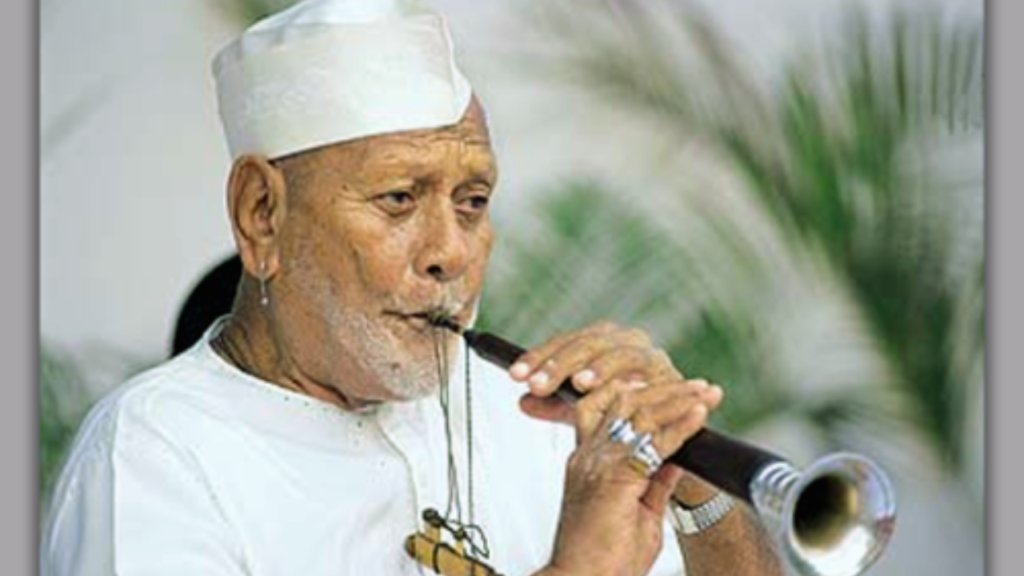On Wednesday, as part of the Ustad Bismillah Khan festival preparations, the grandson of shehnai player Afaq Haider and son of tabla player Najim Hussain, the master, will perform with a number of well-known Chinese artists at the Dumraon historic Raj High School grounds. To add the finishing touch to the arrangements, administrative preparations are underway.
The finishing touches for the festival are being made under the direction of Sub-Divisional Magistrate Kumar Pankaj. Famous qawwali singer Nasim Kausar, Bollywood singer Altaf Raja, ghazal artist Navendu Bhattacharya, the Magadh Dance Group from Patna, the grandson of shehnai maestro Bismillah Khan, and tabla player Najim Hussain are all scheduled to perform at the festival.

On February 21, at 4 p.m., the festival program will begin on the grounds of Raj High School, according to Sub-Divisional Magistrate Kumar Pankaj. Department of Arts and Culture and district administration work together to organize the festival. The Ustad Bismillah Khan festival was held at Dumraon’s Raj High School in 2022, he added.
According to Sub-Divisional Magistrate Kumar Pankaj, the event will take place on Wednesday, February 21st, from 4:00 PM to 9:30 PM. From 4:00 PM to 6:00 PM, local artists will perform. From 6:00 PM to 6:30 PM, there will be speeches and the official inauguration. After that, the main event will run from 6:30 PM to 9:30 PM.
The program will mainly feature performances by members of ustad bismillah khan family, music by Altaf Raja, qawwali by Bacha Nasim Kausar, and ghazal singer Navendu Bhattacharya of the Magadh Music Dance Group.
Shehnai sound reverberated with the master’s. In the lane of Bhiring Raout in Dumraon Nagar of the Buxar district, Ustad Bismillah Khan was born on March 21, 1916, in the home of shehnai player Bachai Miyan. At Dumraon’s Banke Bihari Temple, the ceremonies would begin in the morning and end in the evening to the sounds of ustad bismillah khan shehnai.
The master also brought the shehnai, a folk instrument, to the forefront of Indian classical music, bringing it to a global audience. From Dumraon, the sound of the shehnai also reverberated when he moved to Varanasi to live with his maternal uncle Ali Bakhsh.
Residents of the area attribute Banke Bihari’s unending grace as the reason behind ustad bismillah khan renown. He received the Bharat Ratna, the nation’s highest civilian award, in 2001. Nonetheless, the current younger generation is starting to forget the Shehnai emperor due to a lack of memory. In Varanasi, on August 21, 2006, the maestro passed away.
ustad bismillah khan “shehnai” has had a significant impact on the field of music. As a result, in 2001, he received the Bharat Ratna, the highest civilian honour in India. His family was in the music business. He included the shehnai among other classical musical instruments by improvising many new ragas with it. He was also recognized internationally.
Pungi playing was outlawed by Mughal Emperor Aurangzeb in his court. Because he didn’t like the sound, the pungi was called a noisemaker. A barber attempted to raise the pungi’s pitch. Taking a hollow stem that was longer and wider than the pungi, he bored seven holes in it and blew into it, causing the holes to close and open.

It made lovely, mellow music. The instrument was called shehnai because it was created by an Indian barber known as “nai” and was played in the court of the king, known as “shah.” The shehnai started to be associated with lucky days. It was one of the nine musical instruments that were used in the royal court’s performances.
1916 saw the birth of ustad bismillah khan in Dumraon, Bihar, into a family of musicians. Rasool Bux Khan, his grandfather, performed shehnai at the Bhojpur king’s court. He played the shehnai, as did his father Paigambar Bux and both of his paternal and maternal uncles.
When Bismillah Khan was younger, the king gave him a 1.25 kg laddu as a reward for singing the Bhojpuri Chaita at the Bihariji temple. When ustad bismillah khan was three years old, he went to Benaras to see his maternal uncle, Ali Bux.
He was enthralled with the shehnai when he witnessed him playing it. He started learning how to play it when he was five years old. He would practice for hours at the Ganga shrine, near the shrines of Balaji and Mangala Maiya. He was inspired to improvise by the river’s flowing waters, and ustad bismillah khan created ragas that were thought to be outside the shehnai’s range.
When he was fourteen, he gave a performance at the Allahabad Music Conference, and Ustaad Faiyaz Khan noticed his talent. He began performing in 1938 from the All India Radio station in Lucknow. August 15, 1947, saw the independence of India. ustad bismillah khan welcomed the nation with his shehnai and gave a performance from the Red Fort. He read out Raag Kafi, and then Pandit Jawaharlal Nehru’s well-known “Tryst with Destiny” speech.

